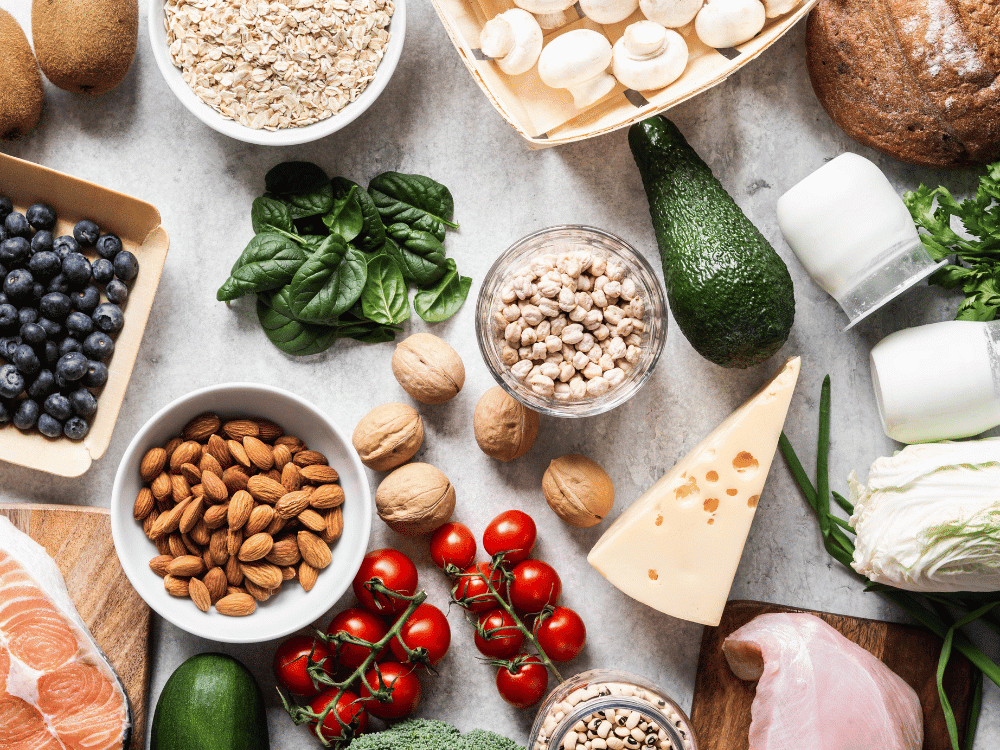Imagine yourself in the future with more energy, less stress, and better overall health. How would you feel if you knew that everything you eat contributes to your well-being, instead of detracting from it? Macrobiotic diet may be the answer to these questions and the solution to many health problems we face today.
Macrobiotics is a philosophy of life that involves balancing ourselves with the natural world that surrounds us, both through nutrition and through our relationship to life and the environment in which we live. It is based on the principles of yin and yang, two opposite forces found in everything in nature, including ourselves. Through a macrobiotic diet, we can achieve a balance of these forces in our body and thus improve our health and quality of life.
What is a macrobiotic diet?
Macrobiotic nutrition represents a balanced approach to nutrition based on the consumption of natural, organic foods of plant origin. This way of eating emphasizes the importance of eating foods that support vitality, immunity and overall health. Macrobiotics focuses on simplicity and balance, using seasonal foods that are locally available.
How to start a macrobiotic diet?
To enter the world of macrobiotics, you can start with a few simple steps:
- Include soup in your daily meal - Vegetable or grain soup provides the body with essential nutrients and hydrating components.
- Eat fermented foods - Fermented foods, such as pickles or miso, support gut health and improve digestion.
- Balance vegetables and grains - Each meal should contain a good ratio of vegetables and grains so that the diet is varied and nutritionally rich.
- Focus on plant-based sources of protein - Instead of animal products, use legumes, nuts and seeds that provide the necessary protein and healthy fats.

Macrobiotic diet
Macrobiotic nutrition is adapted to individual needs, depending on age, physical condition and lifestyle. The basis of the diet consists of cereals, legumes, vegetables, small amounts of fruit and algae, with occasional consumption of fish and seafood. Instead of refined sugar, natural sweeteners such as barley or rice malt are used. Unrefined sea salt and cold-pressed unrefined oils are used, while seaweed enriches meals with minerals and trace elements.
The consumption of meat, dairy products, refined sugar, industrially processed foods, as well as certain acidic vegetables such as tomatoes, peppers, potatoes and eggplants is avoided. Food preparation can include various techniques such as pickling, steaming, stewing, frying, pressure cooking and baking.
Basic components of macrobiotic nutrition
Macrobiotic diet consists mainly of organically grown whole grains, vegetables, legumes, fruits, seeds and nuts. These foods are rich in nutrients, including vitamins, minerals, fiber, antioxidants, and phytonutrients that are key to maintaining good health.
Whole grains
The basis of macrobiotic nutrition is whole grains, which should make up about 50-60% of the daily intake. The most commonly used grains include brown rice, barley, oats, millet and quinoa. These grains are rich in fiber, vitamins and minerals and help maintain a healthy body weight.
Vegetables
Vegetables should make up about 25-30% of the daily diet. It is important to choose fresh, seasonal and organic vegetables when possible. Leafy green vegetables such as kale, spinach and Swiss chard are especially recommended, as they are rich in vitamins, minerals and antioxidants.
Legumes
Legumes are another key component of a macrobiotic diet and should make up about 10-15% of the daily diet. It includes chickpea, soy, azuki beans and black beans. These legumes are rich in protein, fiber and essential minerals.
Algae
Algae, such as nori, wakame, kombu and arama, should be regularly included in the diet. Seaweed is rich in minerals, especially iodine, which is essential for healthy thyroid function.
Seeds and nuts
Seeds and nuts, such as sunflower, pumpkin, almonds and walnuts, should be consumed in moderation. They are a source of healthy fats, proteins and other essential nutrients.
Fruit
Fruit should be consumed in moderation and should be fresh, seasonal and organic when possible.
Fermented food
Fermented foods, such as miso, tamari, umeboshi, and sauerkraut, are an important part of a macrobiotic diet because they help maintain a healthy gut flora.
Consumption of processed foods, sugar, dairy products, meat and caffeine is avoided in a macrobiotic diet. It is also recommended to cook food using gentle methods such as steaming, boiling and baking.

Balancing yin and yang through nutrition
Yin and Yang are concepts that come from ancient Chinese philosophy and medical practice. They represent opposite, but interrelated and interdependent forces found in everything in nature. Yin is associated with coldness, passivity, wetness, and expansion, while Yang is associated with heat, activity, dryness, and contraction.
Balancing Yin and Yang through diet is a key aspect macrobiotic diet, as well as traditional Chinese medicine. The idea is that the food we eat has both Yin and Yang properties, and that it is important to consume food in a way that will maintain a balance between these two forces in the body.
Food is classified as Yin, Yang, or neutral, based on its thermal nature, taste, and effect on the body.
For example, foods that are cool, moist, and sweet, such as cucumbers, watermelon, and strawberries, are considered Yin.
Foods that are warm, dry and salty, such as red meat, garlic and ginger, are considered Yang.
Neutral foods, such as brown rice, lentils and broccoli, are thought to have balanced Yin and Yang properties.
In order to achieve a balance between Yin and Yang through diet, it is important to consider several factors.
Season
In the colder months, it is recommended to eat more Yang foods to warm the body, while in the warmer months, it is recommended to eat more Yin foods to cool the body.
Your constitution
People have different constitutions, which means that some people naturally have more Yin energy, while others have more Yang energy. It is important to adapt your diet to your constitution.
Your current status
Your current state of health should also be considered when balancing Yin and Yang through diet. For example, if you suffer from inflammation, which is associated with excess Yang energy, consuming more Yin foods is recommended.
Balancing Yin and Yang through nutrition is a complex process that requires understanding your needs and listening to your body. It is also important to have a balanced diet that includes a variety of foods from all food groups.
An example of balancing yin and yang
For example, eating too many yin foods, such as fruits and vegetables, can make you feel cold and weak. On the other hand, eating too many yang foods, such as meat, eggs, and processed foods, can make you feel hot and tense.
By balancing these two forces through nutrition, you can achieve optimal health and well-being. The main thing to remember is that you must always find a balance and not go to either extreme.

Personal experiences with macrobiotic nutrition
My journey towards a macrobiotic diet began a few years ago when I felt I needed a change in my lifestyle. Constant stress, fatigue, and a sense of dissatisfaction were my daily routine, and my health began to suffer. I decided to try the macrobiotic diet after reading several books on the subject and talking to friends who were already familiar with this philosophy of life.
The first few weeks were a challenge, as I had to get used to a new routine and a new type of food. However, after I got used to it, I started to notice positive changes in my body and mind. I felt more energetic, less stressed, and generally more satisfied with my life. Also, I noticed that some health problems I had, such as indigestion and headaches, started to disappear.
This positive impact of macrobiotic nutrition on my health and well-being has motivated me to continue following this lifestyle and to recommend it to others who are looking for a natural way to improve their health.
Macrobiotic nutrition - Menu and recipes for breakfast
A macrobiotic-style breakfast might include:
- Warm porridge made from whole grains (such as millet, oats or brown rice) with the addition of seasonal fruits and nuts.
- Miso soup with vegetables and algae, which provides essential minerals and contributes to energy to start the day.
- Wholemeal bread toast with hummus or avocado spread, along with fresh vegetables like cucumber and radish.
Conclusion
Personal experiences with a macrobiotic diet may vary from person to person, but many people report positive effects on their health and well-being. For example, some people feel more energetic and mentally alert when they switch to a macrobiotic diet. Others report improvements in digestion, reduction in chronic disease symptoms, and weight loss.
However, a macrobiotic diet can be challenging for some people to follow, especially at first. This is a way of eating that requires careful planning and preparation, and can be difficult to stick to in social situations or when traveling. Also, some people may have difficulty adjusting to a reduced intake of animal protein.
A macrobiotic diet is a natural way to achieve optimal health and well-being. It is based on the principles of yin and yang, and includes the consumption of whole grains, vegetables, legumes, fruits, seeds and nuts.
By balancing the yin and yang forces through diet, you can achieve better health, more energy, less stress, and an overall more satisfying life. My personal experience with a macrobiotic diet has been very positive, and I believe that this lifestyle can help many people achieve better health and well-being.









